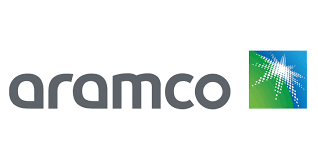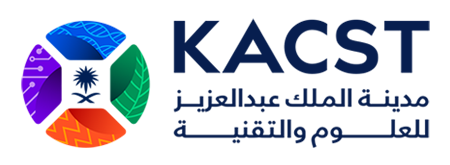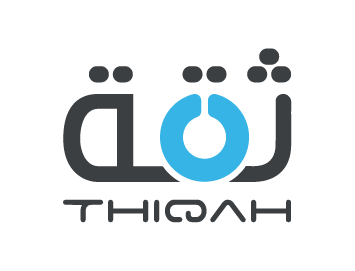Is your company built to preserve the status quo or to invent the future?
This question defines whether an organization is simply surviving or actively shaping its industry.
Innovation in the workplace is not limited to groundbreaking inventions or billion-dollar product launches—it’s the everyday process of implementing new ideas, methods, and solutions that create measurable value.
Sometimes this means small incremental changes, like streamlining a workflow, while other times it involves radical, disruptive breakthroughs that redefine markets.
This guide takes innovation beyond the buzzword. It provides a practical framework that leaders and professionals can use to build a culture where new ideas thrive.
We’ll explore the cultural foundations, proven creative problem-solving techniques for business, and actionable strategies for fostering employee innovation.
The goal is clear: to transform workplaces into ecosystems that continuously generate and implement ideas.
Innovation can be easily achieved through enrolling at Balanced Score Training Center.
The Foundation: Creating a Culture Where Innovation Can Thrive
Innovation can thrive when there is a healthy work culture that acts as a foundation for it to grow.
Leadership's Role: From Gatekeeper to Gardener
In traditional workplaces, leaders acted as gatekeepers, approving or rejecting ideas from the top down.
But in a modern innovative culture, leadership shifts to being gardeners—creating fertile ground where ideas can sprout from any level of the organization.
This means offering guidance and resources while empowering employees to explore solutions independently.
Leaders who embrace this role communicate trust and demonstrate that creativity is not confined to the boardroom.
Psychological Safety: The Freedom to Fail
No innovation can occur in a climate of fear.
If employees are punished for mistakes, they’ll avoid risks and stick to routine.
Psychological safety—the belief that one can take risks without fear of negative consequences—is the bedrock of workplace innovation.
When failure is reframed as learning, employees are more likely to test bold ideas.
As Google’s Project Aristotle study revealed, teams with high psychological safety consistently outperform others.
Carving Out Time and Space for Deep Thinking
Creativity requires oxygen—time and mental space. Companies like Google popularized the concept of “20% time,” allowing employees to dedicate a portion of their workweek to passion projects.
Similarly, hackathons, “innovation days,” or quiet reflection sessions provide structured opportunities for fresh thinking.
Without this breathing room, even the most talented teams will default to firefighting instead of idea generation.
Diversity of Thought: Your Greatest Innovation Asset
Homogeneous teams tend to recycle the same solutions. In contrast, diversity of thought—stemming from varied cultural backgrounds, disciplines, and experiences—leads to richer perspectives.
When organizations actively recruit and integrate diverse voices, they increase the probability of breakthroughs.
True innovation in the workplace thrives when people challenge assumptions and approach problems from multiple angles.
A Toolkit for Generating New Ideas at Work
Yes, generating ideas can be achieved through strategic approaches such as:
Brainstorming, But Better: Beyond the Basic Free-for-All
Traditional brainstorming often results in a few loud voices dominating the conversation.
More structured techniques like Round Robin Brainstorming ensure that everyone contributes equally, while Reverse Brainstorming flips the script by asking, “How could we cause this problem?”
This counterintuitive method often surfaces hidden insights and novel solutions for generating new ideas at work.
Check out our Employee Training courses.
Design Thinking for Business Challenges: A 5-Step Overview
Design thinking for business challenges has become a global standard for innovation because it is human-centered and iterative.
Its five stages—Empathize, Define, Ideate, Prototype, Test—guide teams to deeply understand user needs before creating solutions.
Instead of guessing what works, teams co-create with end users, reducing wasted effort and increasing the likelihood of meaningful impact.
The SCAMPER Method for Iterative Innovation
SCAMPER is a practical tool for improving existing products or processes. It stands for Substitute, Combine, Adapt, Modify, Put to another use, Eliminate, and Reverse.
By systematically applying these prompts, organizations can spark new possibilities.
For example, a food company might Combine two product lines into a new offering, or a logistics firm might Eliminate redundant steps in its delivery chain to save costs.
Creative Problem-Solving Techniques for Business
A problem-solving mentality is the key to creativity; this mentality can be achieved through:
The "Five Whys" Technique for Root Cause Analysis
Problems are often symptoms of deeper issues.
By asking “Why?” five times in succession, teams can drill down to the root cause.
For instance, if a project misses deadlines, the first “why” might reveal unclear requirements.
Further questioning might uncover systemic communication failures. This structured curiosity prevents organizations from wasting resources on surface-level fixes.
Mind Mapping for Visualizing Complex Problems
Some challenges are too intricate to capture in linear lists. Mind mapping allows teams to visually chart problems, ideas, and relationships.
This method helps uncover connections between seemingly unrelated factors, providing a holistic view of challenges.
For creative problem-solving techniques for business, mind mapping remains one of the simplest yet most powerful tools.
The Six Thinking Hats: Looking at a Problem from All Angles
Edward de Bono’s Six Thinking Hats technique encourages teams to adopt different perspectives: logic (white), emotion (red), caution (black), optimism (yellow), creativity (green), and process (blue).
By deliberately rotating through these viewpoints, teams avoid groupthink and uncover innovative solutions that balance practicality with imagination.
Our training courses in Cairo are the best place to unlock your innovative potential.
Enhancing Team Creativity: From Individuals to a Collective Force
The following strategies can help you facilitate creativity in the workplace:
Building Cross-Functional "Innovation Squads"
When finance professionals collaborate with designers, or engineers team up with marketers, unexpected sparks fly.
Cross-functional squads bring together complementary expertise to tackle complex problems.
These “innovation squads” break silos, accelerate learning, and often produce solutions that wouldn’t emerge within a single department.
Facilitating Constructive Debate and Feedback
Innovation thrives on healthy tension.
Teams should be encouraged to respectfully challenge assumptions and provide constructive feedback. Leaders must model openness by welcoming dissenting opinions.
By cultivating a culture where debate is framed as collaboration rather than conflict, organizations strengthen both ideas and relationships.
Recognizing and Rewarding Innovative Contributions (Not Just Successes)
Recognition systems often reward only successful outcomes. But this unintentionally discourages experimentation, since not every idea will succeed.
Instead, organizations should celebrate the effort, courage, and creativity behind proposals. Even unsuccessful initiatives can provide valuable learning, laying the groundwork for future breakthroughs in fostering employee innovation.
Statistics: The Business Case for Workplace Innovation
Data underscores the tangible benefits of innovation in the workplace.
- According to a McKinsey survey, 84% of executives agree that innovation is critical to growth strategy, yet only 6% are satisfied with their innovation performance.
- Deloitte found that companies with strong cultures of innovation are 30% more likely to be market leaders.
- Additionally, Gallup research shows that employees who feel their ideas matter are 4.6 times more likely to be engaged at work.
These statistics highlight not just the necessity but also the untapped opportunity in making innovation a daily practice.
Conclusion: Innovation is a Practice, Not a Project
Innovation is not a one-off workshop or an annual initiative—it is a daily practice. Successful organizations integrate culture, structure, and creative problem-solving techniques for business into the fabric of their operations.
Leaders cultivate psychological safety, employees apply practical toolkits like SCAMPER and design thinking, and teams leverage diversity to enhance creativity.
The ultimate goal isn’t to stumble upon one great idea but to build an organization that functions as a perpetual idea-generating machine.
Mastering innovation in the workplace ensures that your company doesn’t just adapt to change—it creates the change others must adapt to.
Contact us today to fully explore your innovative abilities.
Frequently Asked Questions (FAQ)
These are some of the most frequently asked questions around the web.
1. What is the difference between creativity and innovation?
Creativity is the act of generating new and imaginative ideas.
Innovation is the process of putting those creative ideas into action to create value. In short, creativity is the thinking; innovation is the doing.
2. How can I encourage innovation on a small budget?
Innovation is more about culture than cash.
You can encourage it by creating a “problem of the week” challenge, starting a book club focused on industry trends, implementing a simple employee suggestion box (and acting on it), and publicly celebrating small, clever improvements.
3. How do you measure innovation in the workplace?
Measurement can be tricky, but key metrics include: the number of new ideas submitted by employees, the percentage of revenue from new products or services, employee engagement scores related to feeling valued for their ideas, and the speed at which ideas move from concept to prototype.
4. Can you force employees to be innovative?
No, you cannot force innovation. It must be invited and nurtured.
The leader’s role is to create the conditions—psychological safety, resources, and strategic alignment—where employees’ natural creativity and problem-solving abilities can emerge and flourish.
Read more:
How to Build a Learning Culture: A Guide to Boost Retention & Engagement



















